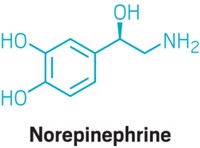Advertisement
Grab your lab coat. Let's get started
Welcome!
Welcome!
Create an account below to get 6 C&EN articles per month, receive newsletters and more - all free.
It seems this is your first time logging in online. Please enter the following information to continue.
As an ACS member you automatically get access to this site. All we need is few more details to create your reading experience.
Not you? Sign in with a different account.
Not you? Sign in with a different account.
ERROR 1
ERROR 1
ERROR 2
ERROR 2
ERROR 2
ERROR 2
ERROR 2
Password and Confirm password must match.
If you have an ACS member number, please enter it here so we can link this account to your membership. (optional)
ERROR 2
ACS values your privacy. By submitting your information, you are gaining access to C&EN and subscribing to our weekly newsletter. We use the information you provide to make your reading experience better, and we will never sell your data to third party members.
Biological Chemistry
Neurochemical Net Traps Bad Memories
As rats mature, formation of a sugar-based matrix around nerve cells in the brain makes traumatic memories impossible to forget
by Sophie L. Rovner
September 7, 2009
| A version of this story appeared in
Volume 87, Issue 36
Traumatic memories are hard to shake and can become intrusive, leading to conditions such as anxiety and posttraumatic stress disorder. An international research team has now discovered a possible explanation for the lasting power of painful memories by taking a close chemical look at rat behavior (Science 2009, 325, 1258). As in humans, traumatic memories persist in adult rats. But in young rats, such memories can be erased. Andreas Lüthi of Friedrich Miescher Institute for Biomedical Research, in Basel, Switzerland; Cyril Herry of the French National Institute for Health & Medical Research, in Bordeaux; and colleagues found that as a rat matures a network of chondroitin sulfate proteoglycans forms around nerve cells in the amygdala, the brain region that controls traumatic memories. When the team destroyed the net with an injected enzyme, adult rats regained the ability to forget traumatic memories. If the findings apply to the human brain, a strategy for preventing pathological memory conditions could be developed, the researchers conclude.





Join the conversation
Contact the reporter
Submit a Letter to the Editor for publication
Engage with us on Twitter